Market
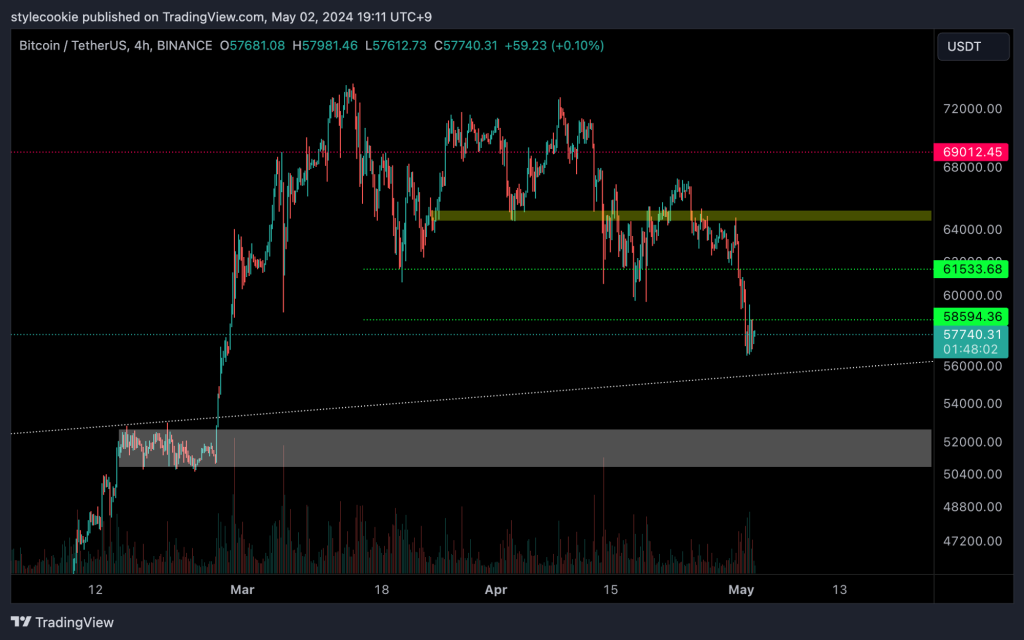
BTC failed to fully recover from $65,000 and fell below the key psychological support level of $60,000 even before the FOMC meeting. I recommended hedging at $67,000 last week as a major macro event approaches in fairly volatile market conditions.
Currently, I think BTC is “close” to the bottom, but I wouldn’t place too many bullish derivatives bets in the current volatile situation. I expect it will take a few weeks for the market to find a bottom. I think the bottom will be made in May. I’m still optimistic. There still appears to be demand on the buy side at $55,000-$57,000. Most importantly, BTC needs to recover $67,000.
Today, I would like to take some time to look over past issues.
US ETF
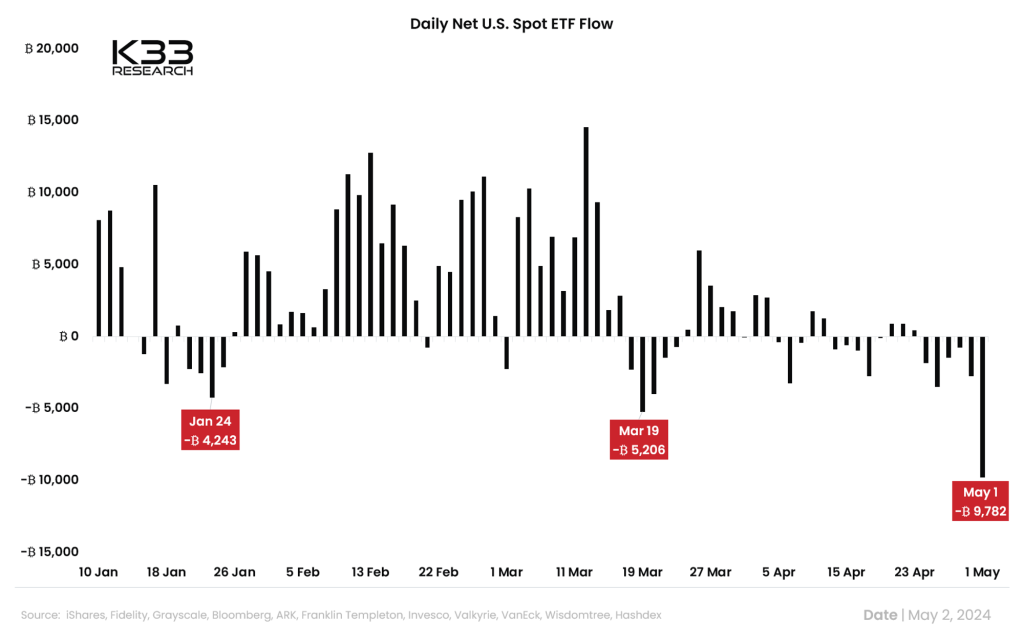
The BTC ETF surprised market participants this week. There were outflows from major ETFs. In particular, IBIT had no inflow for 5 days after 72 days of continuous inflow, and had its first outflow today. This news is clearly negative. However, as I mentioned in my article a month ago, the influx cannot continue forever. ETFs always experience outflows and inflows from other asset classes besides BTC. We should not panic too much about this news because there will definitely be a capital outflow at some point, just like now.
Currently, much of the market’s optimism has disappeared due to ETF outflows, but in addition to the ETF market, capital flow in the general market is also very important. At some point, people are interpreting the huge market only with ETFs. ETF inflows/outflows do not represent the entire crypto market. Outflows, like inflows, do not occur indefinitely.
If the macro environment changes, expect ETF inflows to increase significantly again.
++ (New News Added)

This is optimistic news. BlackRock is providing education on the BTC ETF to pension funds and other sovereign wealth funds. I think the time when they will actually make meaningful investments is when real interest rates turn negative, but anyway, this will definitely happen at some point.
See the big picture.
HK ETF
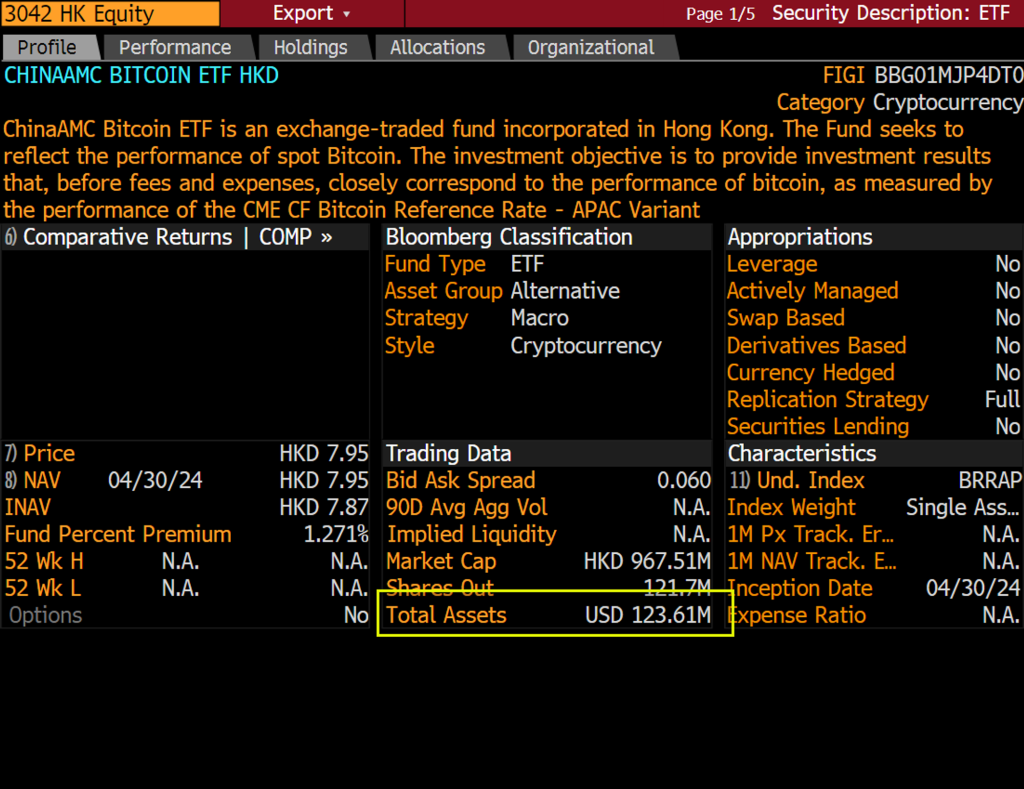
On April 30th, the BTC/ETH ETF was launched in Hong Kong. On the first trading day, we recorded lower trading volume than expected, which was very disappointing. Very low trading volume compared to US ETFs. I wasn’t at all surprised because this was expected, but people seem to have sold the news.
What I see is a more optimistic view. The launch of ETFs in each major country means that interest in the asset called BTC is increasing. It also increases the likelihood that more asset managers, institutions, pension funds, etc. will invest. Clearly, BTC is gaining more and more attention as an asset.
Although it is a short period of time, the results so far are that HK ETF inflows have somewhat offset US ETF outflows. On the first day of trading, actual inflow amounted to $292M, which is one-third of the US ETF. The inflow does not appear to be small, so let’s continue to watch to see if it will cause a new wave.
13F
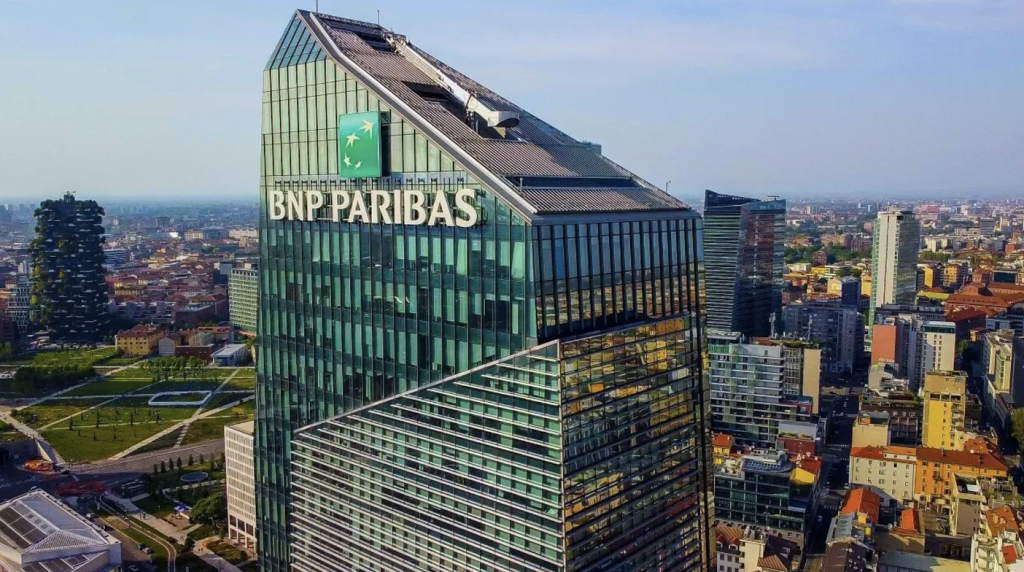
Several analysts are very pessimistic on the BTC ETF due to the lack of large institutional holdings. If you analyze it from the current perspective, it is definitely not wrong. However, the BTC ETF is a very young ETF, only 3 to 4 months old. It is difficult for me to understand pessimism about the lack of large institutional holdings in this product. An accurate evaluation will be made in 1-2 years.
I am also bullish on the current 13F. As in last week’s analysis, I don’t think there has ever been such an optimistic moment in BTC history. Think about it. In the past history of BTC, would you ever have imagined that we would face a moment like this?
The number of holders is definitely increasing… That’s the key.
QRA & Buybacks
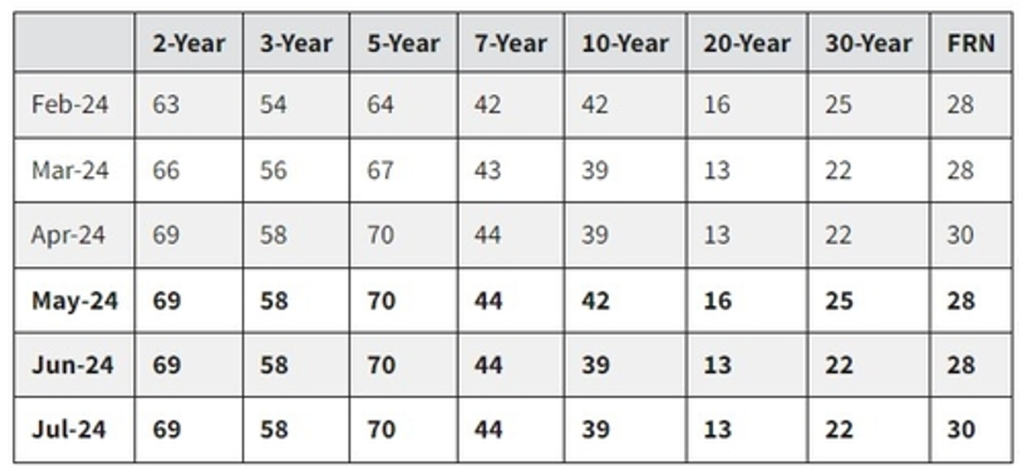
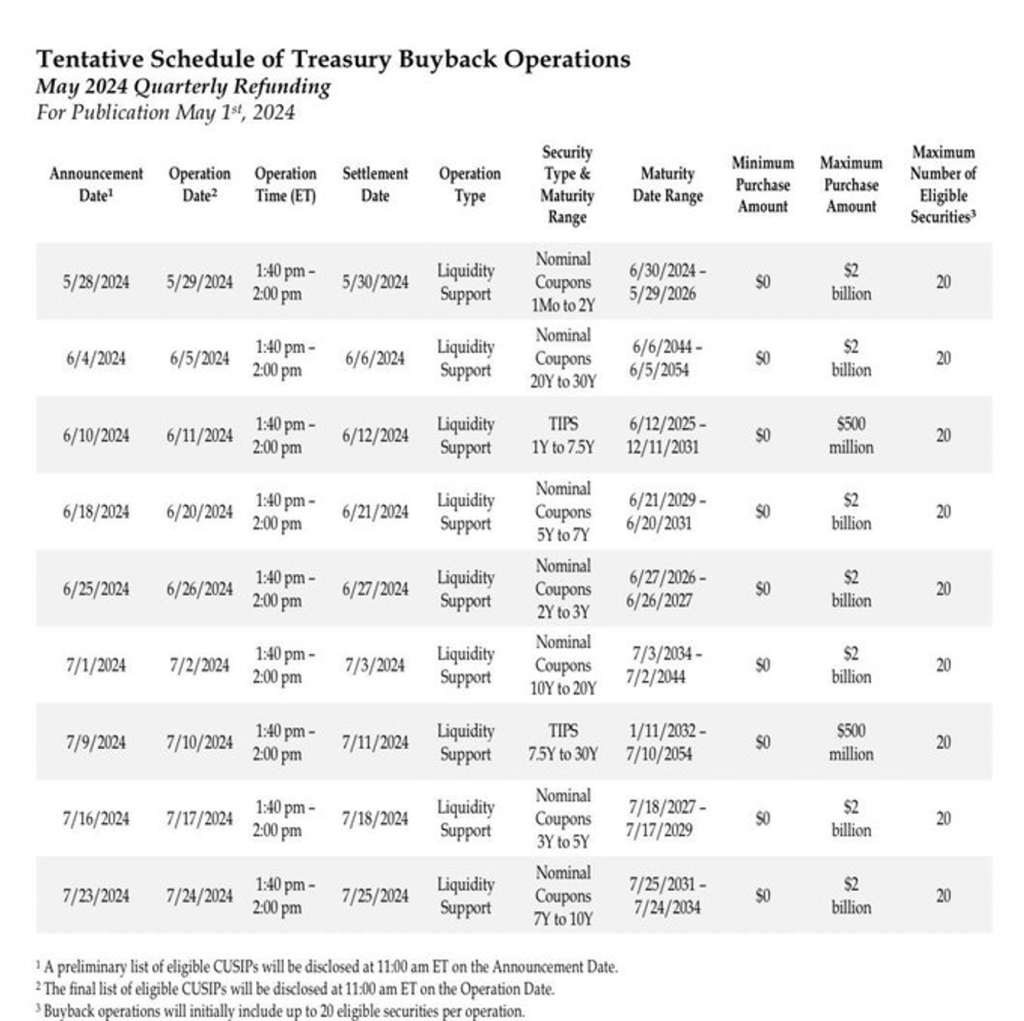
There are some views that this QRA was hawkish as the expected size has increased compared to last January, but there is no significant change in size compared to the previous quarter’s QRA. This appears to be a good situation for the bond market because the burden on long-term bonds has decreased due to the reduction in QT size. This buyback is essentially a policy to support government bond liquidity. In other words, the Treasury purchases government bonds that have previously been issued with reduced liquidity and exchanges them for government bonds with high liquidity. This is not the Treasury QE people are talking about.
Since the size is $15B, the impact on the market is not expected to be significant. It’s certainly not bad news for the market.
Thanks To Youngbin Yang.
FOMC
The Fed announced that it would reduce the size of QT starting in June. It increased from the existing $60B to $25B, exceeding the estimate of $30B. The market reacted sharply to this, but quickly returned to its original position. Powell may have taken this action to ease the burden on the Treasury and bond markets. If I only interpret this QT size reduction, I have a positive evaluation of the market.
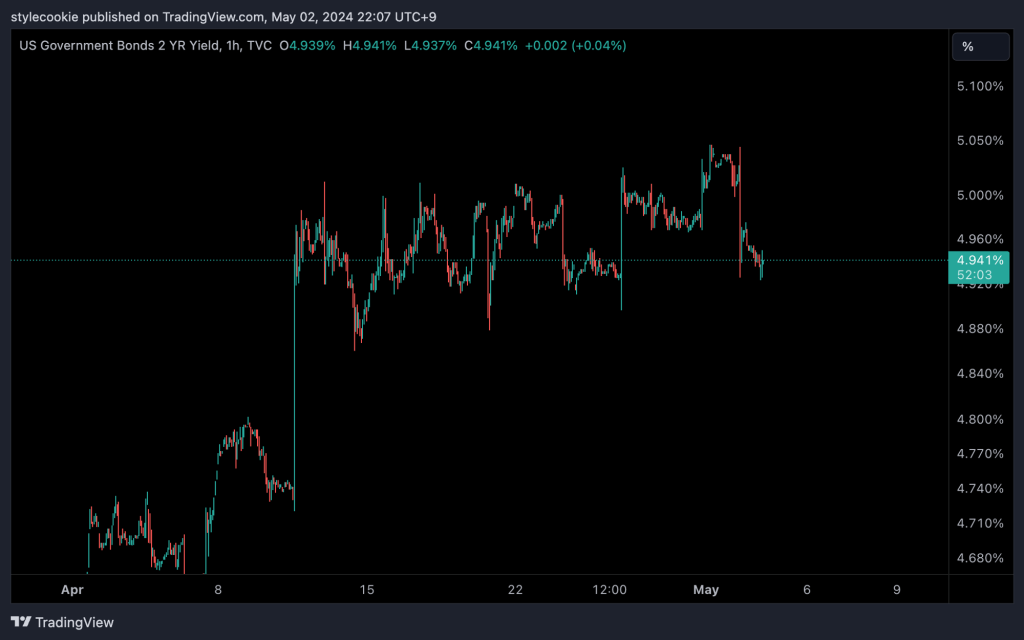
“I think it’s unlikely that the next policy rate move will be a hike. I would say it’s unlikely”
“Well, of course, we’re not satisfied with 3% inflation. 3% can’t be in a sentence with satisfied. So we will return inflation to 2% over time”
- The Transcript
There was no further increase in interest rates. The Fed also showed that it remains concerned about inflation and reaffirmed its 2% target. Overall, the Fed said it would keep interest rates at current levels in line with inflation, given the potential for inflation to rise again. The market is likely to recover slightly as bearish bets on Treasuries that took place before the FOMC are reduced. The market is likely to now turn its attention to CPI.
For reference, the FOMC is usually an event that is largely meaningless except for major issues such as the current change in QT size.
ADP
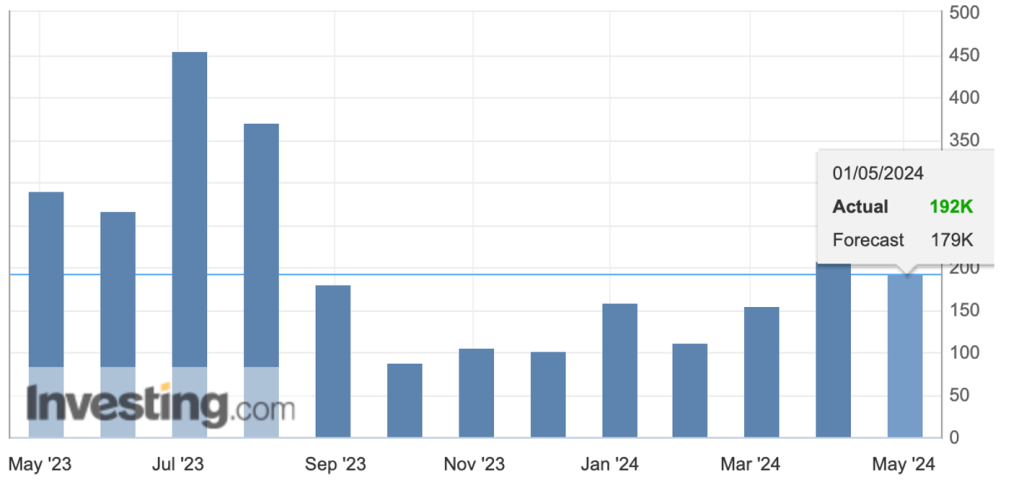
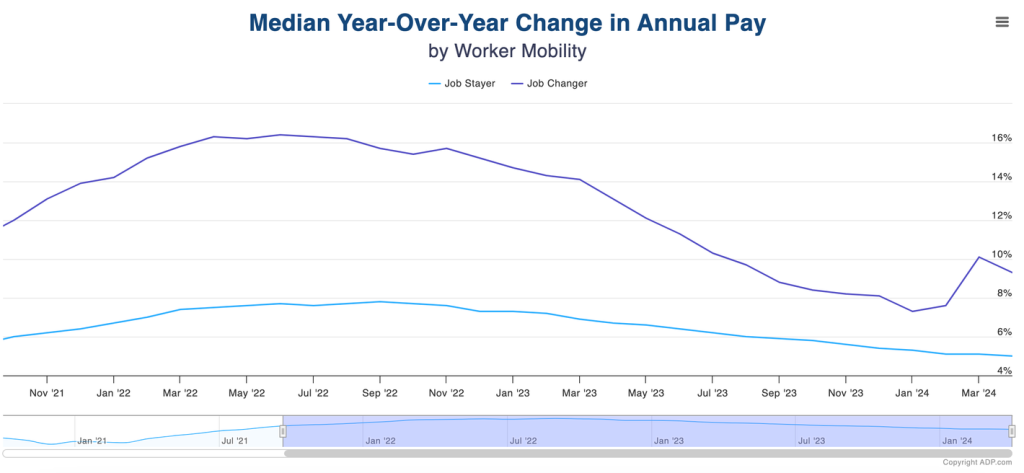
Usually, ADP is announced before NFP, but since it is not an official announcement from the government, it is less important. However, it is helpful in predicting NFP results. This ADP added 192K jobs, more than expected. And the salary of job changers was lowered from 10.1% to 9.3%. This may have an impact on inflation, so concerns about inflation can be seen as having eased somewhat.
Stagflation
“I was around for stagflation. It was brutal. Ten percent unemployment. High single-digit inflation. And very slow growth. Right now, we have 3% growth. Which is pretty solid growth, I would say, by any measure. And we have inflation running under 3%. So, I don’t really understand where concerns about stagflation are coming from.”
- The Transcript
I don’t have much confidence in Chairman Powell, but… I agree with what he says. As in last week’s analysis, I think it is difficult to confirm stagflation at the moment. I don’t think inflation will fall rapidly from its current levels, but it won’t rise dramatically either. Additionally, the economy is still “growing” and unemployment has not increased.
If there is data showing that the unemployment rate is increasing and the economy is starting to deteriorate in the future… I’ll talk about this topic again then.
AI
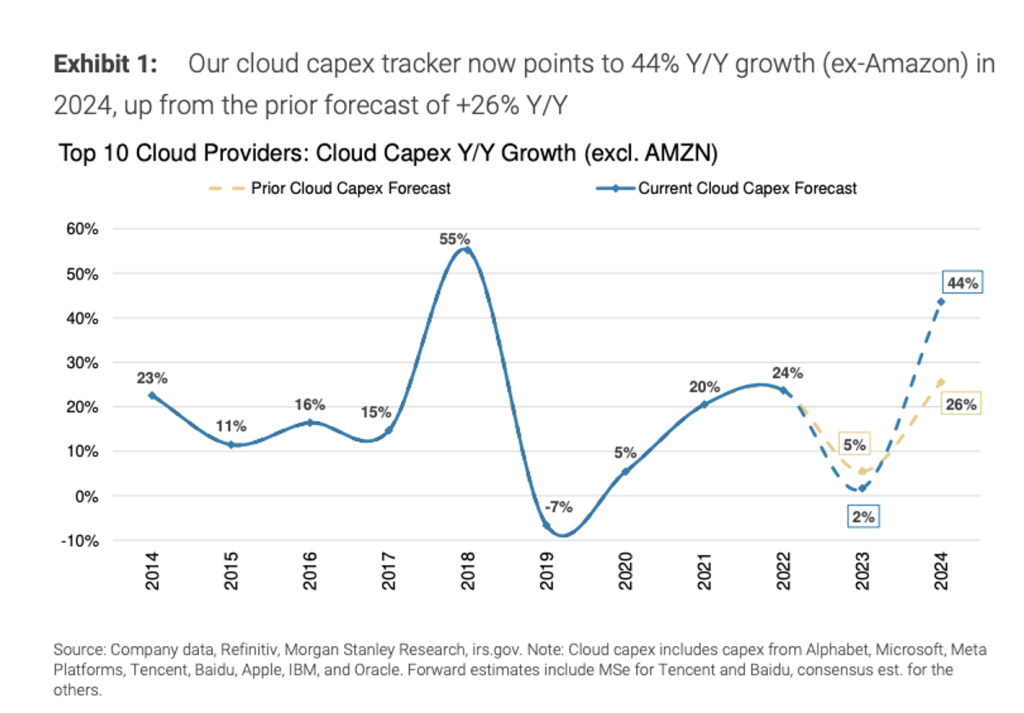
$AMZN CFO on Capex trends: “…we will be meaningfully stepping up our CapEx, and the majority of that will be to support AWS infrastructure & specifically generative AI efforts…in Q1, we had $14B of CapEx, we expect that to be the low quarter for the year”
“We expect capex to increase materially on a sequential basis driven by cloud and AI infrastructure investments…we expect FY 25 capital expenditures to be higher than FY 24” – $MSFT CFO
“The significant year-on-year growth in CapEx in recent quarters reflects our confidence in the opportunities offered by AI across our business” – $GOOGL CFO”
- The Transcript
Earnings season has begun and news from major companies is being released one by one. AI companies’ earnings overall look good. There was concern about market expectations regarding META, but MSFT did enough to rekindle expectations. Major AI and semiconductor companies such as GOOGL, AMZN, QCOM, and SAMSUNG also showed results of corporate growth and recovery.
I think AI is a very important industry that will be responsible for the next 10 years of our lives, regardless of the stock price. It will take time to see actual productivity improvements, but as with the invention and spread of the Internet, they are absolutely necessary. If inflation stays as low as it is now, and productivity improves and businesses grow due to AI… The economy will be strong.
A new chip war has begun to block NVDA dominance. Huge amounts of money are being invested in the market. Major companies such as MSFT and GOOGL announced that they will begin developing their own AI chips. The results of the war will be revealed in a few years. Rather than developing an LLM, AAPL will focus on forming a market ecosystem using partnerships with major companies.
TSMC, HYNIX, SAMSUNG, etc. produce good semiconductors for AI. MSFT, AAPL, GOOGL, META, AMZN, etc. are using AI to improve productivity and change the real world… Yes, I am very optimistic about the future ahead.
Schedule for the rest of this week

- 5/2 – $AAPL, $COIN Earnings
- 5/3 – NFP(Nonfarm Payrolls), 실업률
NFA DYOR 🙂

Comments